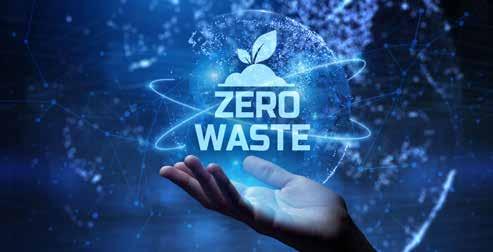is printed on 100% recycled paper
Promoting integrated resources management
Landfills
The vital foundation of design and construction
Circular Economy Reimagining the potential of waste
The official journal of the
Carbon Emissions
The path to net-zero
Trash to Ash and Protecting Mother Nature
IN THE HOT SEAT Within the South African context, the reality is that, in most urban areas, the bulk of e-waste sent to landfill is picked up the same day by informal waste pickers specifically on the lookout for saleable materials." Malcolm Whitehouse General Manager at AST Recycling ISSN 1680-4902 • R55.00 (incl. VAT) • Vol. 23 No. 01 • February 2021





















